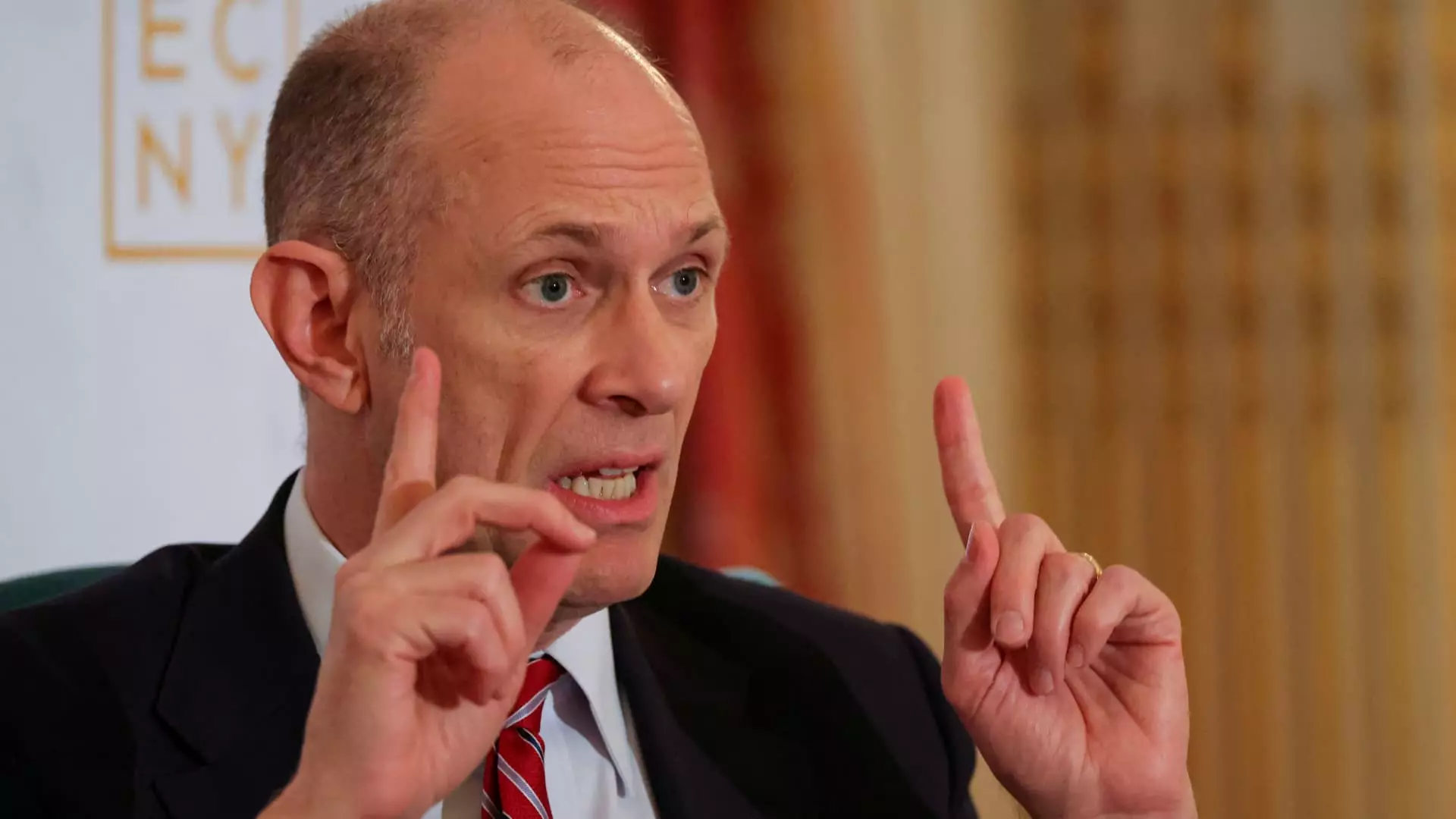In a time where economic stability is crucial for growth and employment, the recent tariff threats issued by President Donald Trump have plunged us deeper into uncertainty. Austan Goolsbee, the president of the Chicago Federal Reserve, articulated this concern succinctly during a recent CNBC interview. With the specter of drastic tariffs haunting the markets, the Federal Reserve’s approach to interest rates hangs in a precarious balance. The implications of such volatility extend far beyond immediate price changes; they spell a potential economic crisis that could ripple through our labor markets and inflation metrics.
Goolsbee’s cautious optimism regarding lower interest rates appears overshadowed by an understandably heightened bar for action. The question now looms larger than before: how do these aggressive tariffs ultimately impact inflation and employment? Tariffs designed as economic weapons can sometimes result in unintended consequences, creating a stagflationary environment that is the central bank’s worst nightmare. The time for decisive action may come soon, but can we afford a strategy that is perpetually reactive rather than proactive?
The Volatility of Trade Policy
Trump’s latest tariff threat—a stunning 50% tax on European Union products starting June 1 and a hefty 25% tariff on iPhones made overseas—reminds us all of the volatility that defines his administration’s policies. While the market response to such saber-rattling is often immediate and visceral, the broader consequences of these tariff measures could lead to scenarios that exacerbate inflation while stifling job growth. For a tech giant like Apple, the proposed tariff isn’t just a financial nuisance; it potentially sets off a chain reaction in consumer prices and spending behaviors.
The reality is that while the cost of an iPhone may seem inconsequential in the grand scheme of the economy, the shift in consumer mood could act as a harbinger for broader economic distress. If average consumers begin to downscale their spending due to inflated prices driven by tariffs, the market could soon find itself in a self-reinforcing cycle of reducing consumer demand and deteriorating business confidence. The consequences could be dire, as Goolsbee himself noted—the economic environment we once took for granted may become a distant memory.
Central Banks on the Tightrope
Central banks, such as the Federal Reserve, typically navigate the razor-thin line between fiscal and trade policy with utmost caution. However, Goolsbee’s sentiments suggest that the ever-shifting trade landscape is compelling policymakers to reexamine their approaches and reactions. While generally ambivalent regarding fiscal actions, the actions taken by Trump demand an analysis beholden to this new reality. As Goolsbee prepares for the upcoming June meeting for the Federal Open Market Committee, the anxiety surrounding potential economic outcomes adds further complexity.
Goolsbee’s perspective, despite the surrounding turmoil, remains cautiously hopeful of returning to a path of sustainable economic growth. Yet, this optimism begs the question: is hope enough when faced with such aggressive and unpredictable policy moves? The market doesn’t have the luxury of time or patience. As Goolsbee pointed out, the economic indices we once relied upon may be upended with every new tariff announcement, making the Fed’s job increasingly difficult.
What Lies Ahead in the Economic Landscape
The current target for the Fed’s benchmark overnight borrowing rate remains between 4.25% and 4.50%, unchanged since December. The markets are bracing for two anticipated rate cuts this year, but radical adjustments to interest rates may soon feel less like a choice and more like an obligation amidst the chaotic backdrop of Trump’s policies. Goolsbee’s caution in forwarding commitments underscores the fear of being boxed in by uncertain circumstances.
As we look ahead, the Fed must navigate a turbulent environment where responsible fiscal policy has nearly become an afterthought in the grand political discourse. The potential for tariffs to derail the recovery process becomes a compelling narrative, feeding existing fears regarding inflation and stagnant wages across multiple sectors. And while hope is an essential ingredient for economic health, it certainly can’t replace the necessity for sound policy and meaningful dialogue that prioritizes economic well-being over political posturing.

